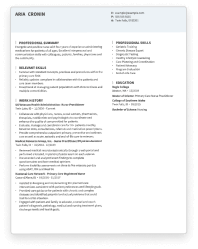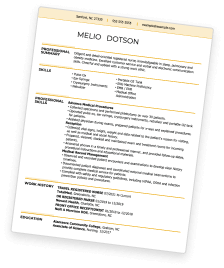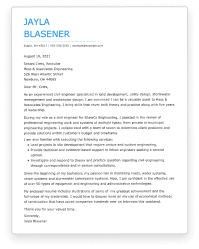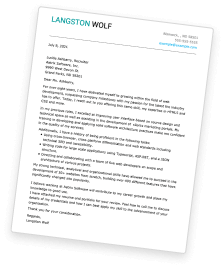Yoga Instructor Resume: Overview
As a yoga instructor, your role transcends the physical boundaries of a traditional teacher.
Your responsibilities extend beyond leading yoga classes; they include creating a safe and nurturing environment, tailoring practices to individual needs, and inspiring your students towards a holistic approach to health.
Yoga instructors find their place in various settings, such as:
- Local Yoga Studios
- Fitness Centers and Gyms
- Wellness Retreats
- Corporate Wellness Programs
- Online Fitness Platforms
Crafting an outstanding resume is a crucial step in your journey to securing your next role as a yoga instructor.
With our professionally designed templates and impactful examples, we’re here to assist you in highlighting your teaching philosophy, expertise, and the unique value you bring to each class.
Yoga Instructor Resume: Getting Started
Embarking on the journey to create your yoga instructor resume begins with selecting the perfect format that resonates with your personal and professional essence.
It’s essential to choose a format that highlights your qualifications in an engaging way, making you stand out amongst other candidates.
There are three main types of resume formats that yoga instructors can consider:
Chronological Resumes for Yoga Instructors
The chronological resume format is highly favored and recommended, focusing primarily on the applicant’s relevant professional experience.
A yoga instructor would list all pertinent experience in the work history section, such as previous teaching positions, workshops led, or retreats organized.
Each work experience should include a detailed description of responsibilities and achievements, as well as the job title, name of the employer, location, and dates of employment.
Responsibilities and achievements are outlined using bullet points that should incorporate strong action verbs and, where possible, quantifiable outcomes to stand out and provide a distinct context to their qualifications.
Chronological resumes are also notably compatible with Applicant Tracking Systems (ATS), aiding your resume in standing out during the initial screening process.
Functional Resumes for Yoga Instructors
Functional resumes put a spotlight on the applicant’s skills. This format is particularly useful when a candidate might lack direct experience relevant to the position being applied for.
For instance, a newly certified yoga instructor might choose a functional resume format to highlight the skills acquired during their training.
Although most employers value work experience more highly, it’s crucial to recognize the potential limitations of a functional resume, especially regarding its compatibility with most Applicant Tracking Systems (ATS) and its effectiveness in engaging employers.
Combination Resumes for Yoga Instructors
A combination resume blends the chronological and functional formats, giving equal importance to skills and experience. This allows candidates to effectively showcase both aspects.
A yoga instructor might opt for the combination format, particularly if they want to balance out a less extensive experience with a strong skills section.
Choosing a Resume Format
Selecting the right resume format is a pivotal step in the resume-writing process. It’s crucial to choose the format that best suits your unique profile.
While the chronological format is often recommended for its compatibility with ATS and its focus on professional experience, it’s important to present your background in a way that best showcases your qualifications as a yoga instructor.
Even if your experience doesn’t directly relate to yoga instruction, highlighting transferable skills that demonstrate your ability to teach, engage, and inspire can make a significant impact.
How To Write A Yoga Instructor Resume
Once you’ve selected a format for your yoga instructor resume, the writing process becomes more structured.
In knowing how to write a resume, you should provide five key sections, with the option to add additional sections to enrich your profile further.
The essential sections of a resume are:
- Contact Information
- Summary or Objective
- Work History
- Skills
- Education
Each section is crucial in portraying you as the ideal candidate for a yoga instructor position and setting you up for success in your professional journey!
Contact Information
Your contact information should include your full name, phone number, professional email address, and location (city and state).
Additionally, you can include your LinkedIn profile or a link to an online portfolio or website, especially if it showcases your yoga journey, teaching experiences, or philosophies.
Place your contact information at the top of your resume, ensuring it is easily visible. The formatting should make your name memorable without detracting from the content of the resume.
An example of the contact information for a yoga instructor’s resume might look like this:
Avery Johnson
Asheville, NC
a.johnson@yogamail.com
5551234567
[LinkedIn Profile/Personal Yoga Website]
Summary or Objective
Beneath the contact information on your resume, you should include a profile that introduces you to the reader.
You have the option between a resume summary and an objective, each serving different purposes based on your experience level.
A resume summary offers a concise overview of your relevant skills, experience, and career aspirations. It’s best suited for individuals with a significant work history in their field.
A compelling resume summary for a yoga instructor might look like:
“Experienced Yoga Instructor with over five years of dedicated teaching in diverse settings, from local studios to international retreats. Known for crafting personalized yoga sequences that cater to all skill levels, promoting physical health, mental clarity, and emotional well-being. Holds a 500-hour RYT certification and specializes in Vinyasa and Hatha practices. Committed to fostering a supportive and inclusive community through mindfulness and holistic wellness.”
An objective statement, on the other hand, focuses on your career goals and enthusiasm for the role, making it a great choice for newcomers or those transitioning into yoga instruction.
A well-crafted resume objective for a yoga instructor could be:
“Passionate and newly certified Yoga Instructor with a deep commitment to sharing the transformative power of yoga. Brings a fresh perspective combined with an intensive 200hour RYT training in Ashtanga yoga. Eager to leverage skills in sequence design and mindfulness techniques to enhance the wellbeing of students at a dynamic studio. Motivated to continuously learn and contribute to a thriving yoga community.”
Note: Whether you choose a summary or an objective, utilize this section to highlight key skills and experiences that match the job description. This strategy helps your resume resonate with both Applicant Tracking Systems (ATS) and hiring managers, increasing the likelihood that your application will advance to the next stage.
Work History
The “Work History” section of your yoga instructor resume is essential for highlighting your relevant teaching experience and achievements.
It’s where you showcase your professional journey, demonstrating your growth, impact, and the value you bring to a yoga teaching role.
Start with your most recent teaching position and work backward, focusing on roles that are closely related to yoga instruction.
This approach not only helps you stand out but also allows you to emphasize responsibilities and accomplishments that underline your qualifications for the role.
Utilize strong action verbs to describe your responsibilities and achievements, and, where possible, quantify these accomplishments.
Incorporating metrics lends credibility to your achievements, offering tangible proof of your effectiveness and distinguishing you from other candidates.
Here’s an example of how to format the work history section on a yoga instructor’s resume:
Yoga Instructor
Harmony Yoga Studio, City, State
01/2019 – Present
- Led daily yoga classes for groups of up to 30 participants, fostering an inclusive and supportive environment for students of all levels.
- Designed and implemented a successful 8week mindfulness and yoga program, resulting in a 40% increase in studio membership retention.
- Spearheaded a workshop on the integration of meditation and yoga, attracting over 50 participants and enhancing community engagement.
Remember, this section is your opportunity to showcase how your unique experiences as a yoga instructor have prepared you to excel in your next role.
Highlighting your impact through specific examples will make your resume more compelling and memorable to potential employers.
Skills
In the skills section of your yoga instructor resume, highlight the hard and soft skills that are most relevant to the role you’re applying for.
This section should showcase a balance of technical abilities and interpersonal qualities that underscore your qualifications as a yoga instructor.
Focus on skills that not only relate directly to teaching yoga but also demonstrate your overall capability to contribute positively to a yoga studio or wellness center.
Some key hard skills and soft skills for yoga instructors include:
Top 5 Hard Skills for Yoga Instructor Resumes
- Yoga Technique Proficiency: Mastery of various yoga styles (e.g., Hatha, Vinyasa, Ashtanga) is essential, showing your versatility as an instructor.
- Program Development: Ability to design yoga programs and workshops that cater to different skill levels and goals.
- Anatomy and Physiology Knowledge: Understanding the human body and how it responds to yoga practices ensures that you can guide students safely.
- Meditation and Breathwork: Proficiency in teaching meditation and pranayama techniques to enhance students’ yoga practice and overall wellness.
- Certifications: Highlighting your yoga teaching certifications (e.g., RYT 200, RYT 500) demonstrates your commitment to professional development and adherence to industry standards.
Top 5 Soft Skills for Yoga Instructor Resumes
- Communication: Excellent ability to communicate poses, adjustments, and concepts clearly to students of all levels.
- Empathy: Understanding and connecting with students’ individual experiences to tailor your teaching approach
- Adaptability: Flexibility in modifying classes and teaching styles to meet the needs and abilities of your students.
- Patience: Fostering a supportive learning environment by being patient with students as they progress at their own pace.
- Leadership: Inspiring and motivating students to deepen their practice while maintaining a safe and respectful space.
An example of how to format the skills section on a yoga instructor’s resume might look like this:
Skills
- Yoga Styles: Proficient in Hatha, Vinyasa, and Restorative Yoga
- Program Design: Experienced in creating thematic workshops and multiweek yoga series
- Anatomy Knowledge: Strong understanding of anatomy relevant to yoga practice
- Meditation and Pranayama: Skilled in guiding meditation and breathwork sessions
- Certifications: RYT 500, First Aid & CPR Certified
Alternatively, for a more streamlined presentation:
Skills
- Hatha, Vinyasa, and Restorative Yoga
- Thematic program design
- Anatomy and physiology
- Meditation and breathwork techniques
- RYT 500, First Aid & CPR
This section is your opportunity to succinctly present the skills that make you a compelling candidate for a yoga instructor position.
Education
For the education section of your yoga instructor resume, list your highest level of education, including the name of the institution, its location, and the degree or certification you obtained.
An example of the education section for a yoga instructor’s resume might be:
Integral Yoga Institute
New York, NY
Certified Yoga Teacher Training (CYTT) – 200 Hour Program
Given the nature of yoga instruction, specific training and certifications often carry more weight than traditional degrees.
Therefore, be sure to clearly list any yoga-related certifications, including the style of yoga and the hours of training completed.
Additional Sections
Including additional sections on your resume is advisable if they are relevant and highlight qualifications that set you apart as a yoga instructor.
These sections should not detract from the essential information but rather complement it by showcasing your unique skills and experiences.
For a yoga instructor, relevant additional sections could include:
- Certifications: Additional yoga certifications or related fitness certifications, such as Pilates or group fitness instructor certifications.
- Volunteer Experience: Any teaching or wellness-related volunteer work, especially if it involves community outreach or working with special populations.
- Professional Associations: Membership in professional yoga associations, which can demonstrate your commitment to the yoga community and ongoing professional development.
- Awards and Honors: Recognition received for your work in the yoga or wellness field.
- Relevant Hobbies: Activities that reflect your interest in wellness, mindfulness, or related areas that can enrich your profile as a yoga instructor.
By thoughtfully selecting which additional sections to include, you can further differentiate yourself and provide a more comprehensive picture of your background and interests.
This approach allows you to highlight the diverse experiences that contribute to your unique teaching style and philosophy.
Top Certifications For Yoga Instructor Resumes
Certifications play a crucial role in the resume of a yoga instructor, as they validate your training and expertise in the field.
Whether you are starting your journey or looking to specialize further, having the right certifications can significantly enhance your appeal to potential employers or clients.
Here are some of the most recognized and respected certifications in the yoga community:
Registered Yoga Teacher (RYT®) with Yoga Alliance: Yoga Alliance is a globally recognized organization, and its RYT certification is one of the most common and respected credentials in the yoga teaching world. The RYT200 certification indicates completion of a 200hour training program in yoga teaching standards. There are also RYT300 and RYT500 certifications for advanced training.
Iyengar Yoga Certification: This certification is specific to teachers of Iyengar Yoga, known for its focus on precision and alignment in the performance of posture (asana) and breath control (pranayama). It requires rigorous training and a deep understanding of the Iyengar method.
Ashtanga Yoga Certification: Ashtanga Yoga teachers often seek certification through the Krishna Pattabhi Jois Ashtanga Yoga Institute (KPJAYI). This style of yoga is more dynamic and physically demanding, and certification indicates a high level of proficiency and dedication to this specific practice.
Children’s Yoga Teacher Certification: Specializing in teaching yoga to children requires understanding how to engage young minds and bodies in the practice. This certification prepares instructors to teach yoga in a way that is fun and appropriate for kids, often incorporating games and stories.
Prenatal Yoga Teacher Certification: This specialized certification trains instructors to safely guide pregnant women through yoga practices that can support them during pregnancy, childbirth, and postpartum recovery. It covers anatomy and physiology, as well as the emotional aspects of pregnancy.
8 Tips For Writing A Yoga Instructor Resume
Customize Your Resume: Tailor your resume for each position you apply for, emphasizing the experience and skills most relevant to the specific role and studio’s philosophy. Highlight aspects of your training and teaching style that align with their practices.
Use Dynamic Action Verbs: Employ compelling action verbs to describe your teaching experiences and accomplishments. Words like “led,” “innovated,” “inspired,” and “facilitated” can add energy and clarity to your resume.
Showcase Your Achievements: Include measurable achievements, such as increasing class attendance, implementing successful wellness programs, or receiving high satisfaction ratings from students. Use numbers and percentages to provide context and prove your impact.
Incorporate Keywords: Identify and integrate keywords related to yoga teaching from the job listing to ensure your resume passes through Applicant Tracking Systems (ATS) and grabs the attention of the hiring manager. This can include specific yoga styles, teaching techniques, or certifications.
Highlight Your Teaching Philosophy: Share your approach to teaching yoga, including how you adapt classes to different skill levels and incorporate elements like mindfulness or meditation. This can help potential employers understand your fit with their studio’s culture.
Mention Specializations: If you have expertise in particular areas of yoga, such as prenatal yoga, children’s yoga, or yoga for seniors, make sure to highlight these. Specializations can make you stand out and show your ability to attract and retain a diverse student base.
Technology Proficiency: If you’re experienced in using online platforms for virtual classes or social media to engage with the community, include this information. Today’s yoga instructors often need to leverage technology to expand their reach.
Proofread Thoroughly: A resume with typos or grammatical errors can undermine your professionalism. Carefully review your resume, or even better, have someone else proofread it to ensure it’s polished and error-free.
View Similar Resume Examples


Use Hloom's Resume Builder
Key Takeaways
- Your resume is a reflection of your journey, philosophy, and the unique skills you bring to your teaching practice, making it an essential tool in your job search.
- While the chronological format is recommended for its emphasis on professional experience, the functional or combination formats may better suit those new to teaching yoga or with specialized skills.
- Highlighting your yoga certifications, especially those recognized by reputable institutions, showcases your dedication to your practice and teaching.
- Tailor your resume to the role. Incorporate specific keywords from the job description, emphasize your relevant skills and experiences, and align your teaching philosophy with the studio’s ethos to demonstrate that you’re the perfect fit for the position.
- Attention to detail makes your resume stand out. Ensure your resume is error-free, clearly formatted, and ATS-friendly, with relevant keywords that reflect your suitability for the yoga instructor role you’re applying for.
Use Hloom's Cover Letter Builder














